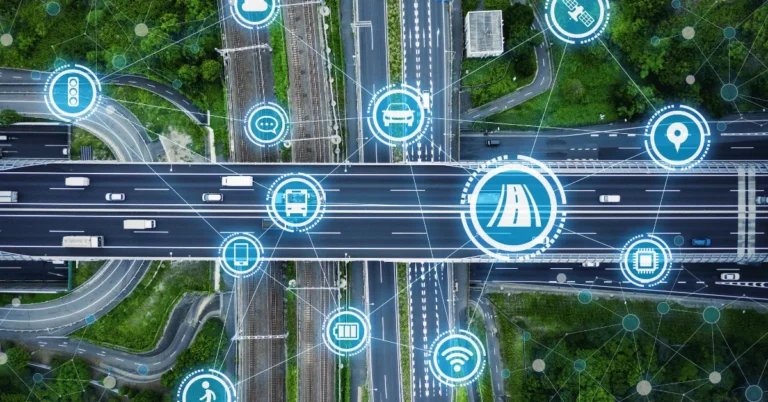What is the Best Drone Detection and Jamming Complex System in the World?

With the rapid advancement of technology, drones have become a ubiquitous presence in various sectors, ranging from commercial and recreational use to critical applications in agriculture, logistics, and surveillance.
However, the proliferation of drone technology has also introduced a plethora of risks and challenges.
Unmanned Aerial Vehicles (UAVs) pose significant threats including privacy invasion, smuggling, and security breaches, necessitating robust countermeasures.
Drone detection and jamming systems have emerged as essential tools to mitigate these risks. These systems are designed to identify, track, and neutralize unauthorized or malicious drones.
The importance of these technologies cannot be overstated, as they serve to protect sensitive areas such as airports, military installations, government facilities, and public events.
The core functionality of drone detection systems revolves around various detection mechanisms. Radar is one of the most prevalent methods, capable of detecting drones based on the reflection of radio waves.
Another common approach is RF (Radio Frequency) detection, which identifies drones by intercepting the communication signals between the drone and its operator.
Visual tracking, often enhanced by AI and machine learning algorithms, uses cameras and optical sensors to identify and track drones visually.
Jamming techniques, on the other hand, focus on disrupting the operation of unauthorized drones.
RF jamming involves emitting signals on the same frequency as the drone’s communication link, effectively severing the connection between the drone and its pilot.
GPS spoofing is another sophisticated method, where false GPS signals are broadcast, misleading the drone’s navigation system and causing it to deviate from its intended path. These jamming techniques are crucial for neutralizing potential threats posed by rogue drones.
In summary, the integration of advanced detection and jamming technologies forms a comprehensive defense mechanism against the myriad of risks associated with drone proliferation.
As the landscape of drone usage continues to evolve, so too must the strategies and technologies employed to ensure the safety and security of critical domains.
Whoops, accidentally flew your drone into a no-fly zone? Learn about the Consequences of Accidentally Flying a Drone into a No-Fly Zone to avoid any trouble.
Key Features of an Effective Drone Detection and Jamming System
When evaluating the best drone detection and jamming system, several key features stand out as essential to its effectiveness.
One of the primary considerations is the range and accuracy of detection. An optimal system should be capable of identifying drones from a significant distance and with high precision, ensuring that even the smallest or fastest drones do not evade detection.
This capability is vital for timely intervention, especially in sensitive areas such as airports, military bases, or large public events.
Equally important is the speed and reliability of response. An effective system must not only detect drones quickly but also react promptly to mitigate any potential threats.
The system’s response mechanism should be robust and reliable, capable of neutralizing drones without causing collateral damage or interference with other electronic devices. This ensures continuous protection without unintended consequences.
An advanced drone detection and jamming system should also possess the ability to differentiate between various types of drones.
Modern airspaces can be crowded with a range of drone models, from recreational to commercial and even military-grade.
The system should intelligently distinguish between these to apply appropriate countermeasures, thereby avoiding unnecessary disruptions and focusing on genuine threats.
Integration with existing security infrastructures is another critical feature. The system should seamlessly blend with current security protocols and technologies, enhancing overall situational awareness and defensive capabilities.
This includes compatibility with surveillance cameras, radar systems, and communication networks, ensuring a cohesive security strategy.
Furthermore, ease of use and cost-effectiveness are significant factors. The system should be user-friendly, requiring minimal training for operators while maintaining efficiency.
Additionally, it should provide a good balance between cost and performance, making it a viable option for a wide range of applications.
Lastly, the importance of real-time monitoring and reporting capabilities cannot be overstated. Effective drone detection and jamming systems should offer real-time data on drone activities, including their location, speed, and altitude.
This information is crucial for informed decision-making and rapid response, ensuring ongoing protection and security.
Wondering if police drones are a helpful tool? Check out our discussion on Is Using Police Drones a Good Idea, and How Should It Be Used?
Top Drone Detection and Jamming Systems in the Market
In the rapidly evolving landscape of drone technology, several prominent systems have emerged as leaders in drone detection and jamming.
Among these, Dedrone, DroneShield, and Black Sage are widely recognized for their advanced capabilities and unique features.
Dedrone offers a comprehensive drone detection solution that integrates multiple sensor types, including radio frequency, camera, and radar sensors.
This multi-layered approach enables Dedrone to provide precise detection and classification of drones.
The system’s software platform, DedroneTracker, utilizes machine learning algorithms to continually improve detection accuracy.
One of the significant strengths of Dedrone is its scalability, making it suitable for both small and large-scale applications.
However, its advanced capabilities come at a higher cost, which may be a consideration for budget-constrained users.
DroneShield stands out with its robust jamming capabilities, designed to neutralize unauthorized drones effectively.
The company’s flagship product, DroneGun Tactical, is a handheld countermeasure that can disrupt drone communications and navigation systems.
DroneShield also offers fixed and portable detection systems that use a combination of sensors to identify drone threats.
The range and versatility of DroneShield’s products make them ideal for a variety of environments, from urban areas to remote locations.
Despite its effectiveness, some users have noted that the system’s jamming range may be limited in highly congested electromagnetic environments.
Black Sage focuses on delivering a modular and customizable drone defense solution. Their system, Titan, incorporates radar, electro-optical, and infrared sensors to provide comprehensive detection coverage.
Black Sage’s open architecture allows for easy integration with other security systems, enhancing its adaptability.
Additionally, Black Sage offers an array of jamming options, including directional and omnidirectional jammers, tailored to specific threat levels.
The primary advantage of Black Sage is its flexibility; however, its complexity may require more extensive training for optimal use.
Real-world applications and customer testimonials underline the effectiveness of these systems in various scenarios, from protecting critical infrastructure to securing public events.
Dedrone has been successfully deployed in airports and correctional facilities, DroneShield has seen extensive use by military and law enforcement agencies, and Black Sage has been praised for its adaptability in both commercial and defense sectors.
In summary, each leading drone detection and jamming system has its unique strengths and potential limitations. Choosing the most suitable system depends on specific needs, budget, and the operational environment.
Want to learn more about the innovative life-saving technology? Read our in-depth review: The Flying Lifebuoy Drone: A Comprehensive Review.
Future Trends and Innovations in Drone Detection and Jamming Technology
The landscape of drone detection and jamming technology is poised for significant advancements, driven by the rapid evolution of artificial intelligence (AI) and machine learning (ML).
These technologies are expected to enhance the accuracy of drone detection systems, enabling swift identification and classification of drones based on their flight patterns and signals.
By employing sophisticated algorithms, AI and ML can predict potential threats and streamline the response process, thereby reducing reaction times and improving overall security.
One of the promising innovations in this field is the integration of AI with sensor fusion techniques.
By combining data from multiple sensors, such as radar, acoustic, and visual sensors, AI can provide a comprehensive and reliable detection mechanism.
This multi-faceted approach ensures that even the most elusive drones are detected, thereby enhancing the efficacy of security measures.
In parallel, advancements in jamming technology are set to revolutionize how unauthorized drones are neutralized.
Future jamming systems are likely to become more selective and precise, minimizing collateral disruptions.
These systems will employ adaptive jamming techniques that can adjust in real-time to the frequency and type of drone, ensuring effective countermeasures while maintaining operational integrity of other communication systems.
The integration of drone detection and jamming systems with broader security infrastructures, such as smart cities and autonomous defense networks, is another critical development.
Smart cities, with their interconnected networks and IoT devices, can benefit from real-time drone monitoring and automated threat response capabilities.
This integration can create a seamless security environment where potential drone threats are identified and neutralized autonomously, ensuring public safety.
However, as these technologies evolve, regulatory and ethical considerations must be addressed. The deployment of drone jamming systems raises concerns about privacy, airspace regulations, and the potential for misuse.
Policymakers and industry stakeholders must collaborate to establish regulations that balance security needs with ethical standards, ensuring that these technologies are used responsibly and effectively.







